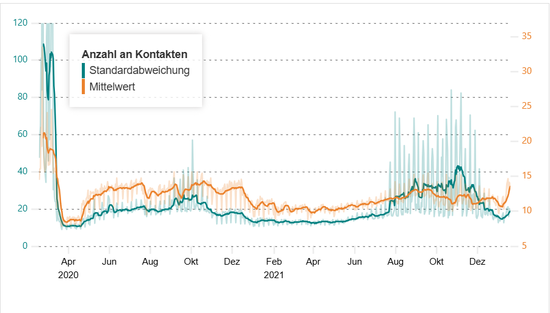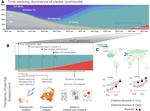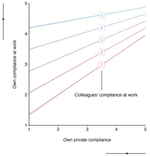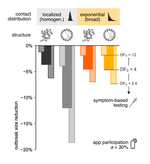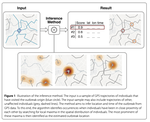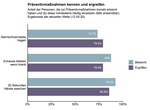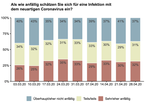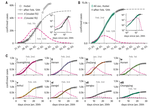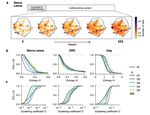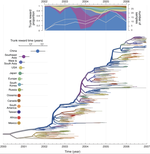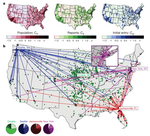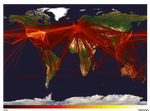The Data Donation Project
Go to the Project Site Install the app
At the beginning of April 2020, we launched the official Corona Data Donation App. Since then, over half a million people in Germany have decided to donate their data. For that, we would like to express our sincerest gratitude! There has never before been a research project of this magnitide involving the collaborative efforts of both citizens and scientists. It is really quite unique.
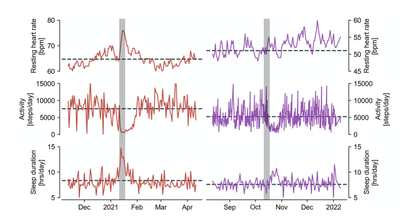
Mobility Monitor
Start Mobility Monitor Go to Project Site
In the Covid-19 Mobility Project, we study movement flows obtained from anonymized mobile phone data. By looking at mobility we can measure how the population reacts to the pandemic, what the effects of different measures are, and use computer models to estimate how this will affect the pandemic.
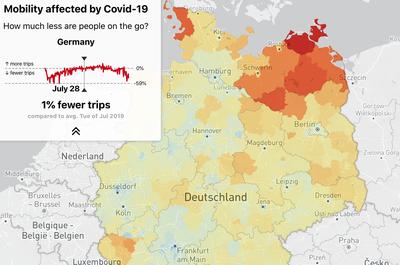
Contact Monitor
Start Contact Monitor Go to Project Site
How a pandemic develops depends on many factors: the biology of the pathogen, its susceptibility to external influences such as humidity and temperature, the success of vaccination campaigns, but most of all it is determined by contacts between individuals: transmissions occur primarily when people have contact with each other. The number of contacts thus gives us an insight into the course of the pandemic. Fewer contacts make it more difficult for the pathogen to spread through the population, whereas more contacts promote rapid spread. In the Contacts Monitor, we show the number of contacts in Germany over time. In the following, we explain how these contacts are measured from GPS data of cell phones.
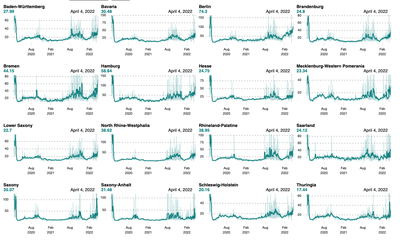
more COVID-19 related projects
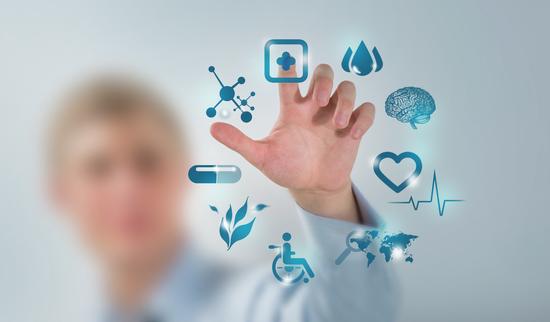
€2.3 Million Funding for SynoSys to Advance Long-COVID Research
A major milestone for us: We have been awarded €2.3 million in funding from the Federal Ministry of Health (BMG) for the SynoSys.PC project, aimed at advancing the understanding of Long-COVID and advancing patient care.
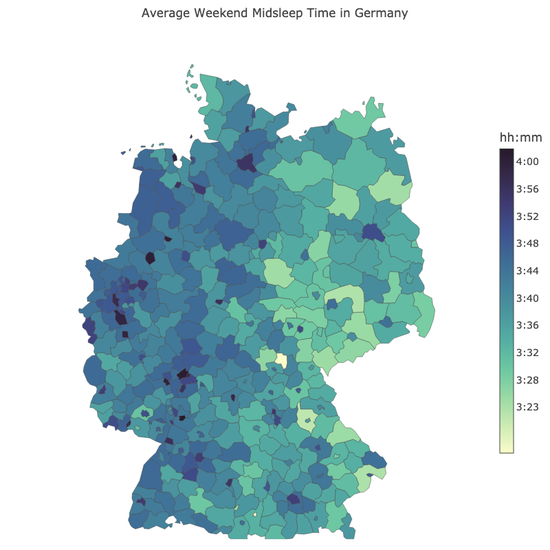
Spatiotemporal Organization of Sleep
We perform comprehensive spatiotemporal analyses of sleep patterns in a sample of over 100,000 individuals across Germany spanning almost 3 years. As part of the Robert Koch Institute’s Data Donation Project for the early detection of COVID-19, sleep data, in conjunction with heart rate and activity data, was collected in a privacy-preserving fashion by passive sensors in consumer wearable devices from April 2020 until December 2022, yielding more than 45 million nights of sleep observations overall.
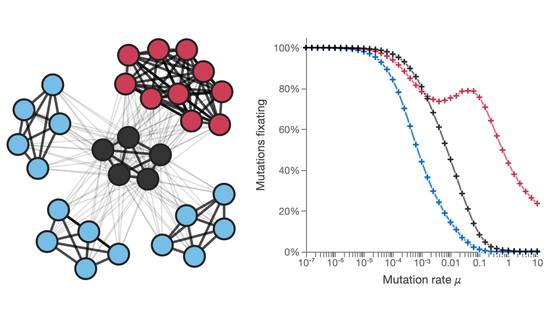
Clonal Interference in Heterogeneous Networks
Our research group explores the intricate relationship between complex environmental structures and evolutionary processes, focusing on clonal interference in asexual populations. We aim to understand how organisms adapt in heterogeneous, network-like environments that closely resemble real-world scenarios.
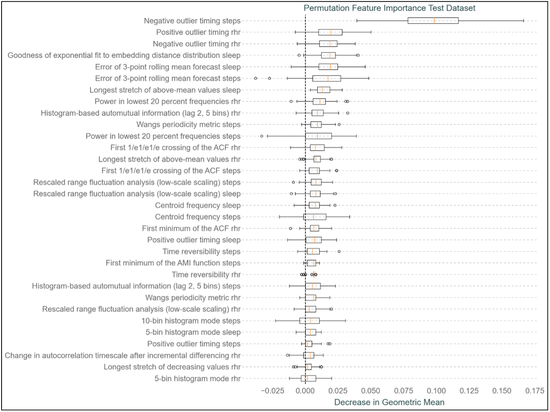
COVID-19 Detection from Wearables
Controlling the spread of infectious diseases early in a pandemic is crucial. The recent COVID-19 outbreak and its rapid global spread highlight the urgent need for tools that can limit the spreading of infectious diseases at the earliest stage possible to prevent global pandemics.
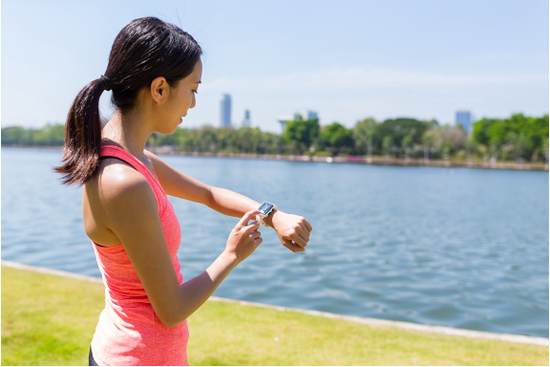
FEDORA Project Secures Funding to Explore Post-COVID Ecological Dynamics
We are thrilled to announce that our project, “FEDORA - Federated Network Modeling of Ecological Complex Dynamical Patterns in Post-COVID,” has successfully secured funding. This pioneering initiative aims to advance the understanding of how ecological systems are affected by complex dynamical patterns emerging in the aftermath of the COVID-19 pandemic.
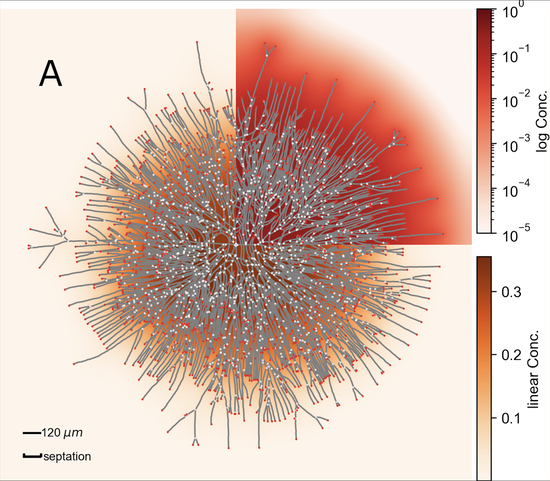
Fungal Growth
Fungi interact in a mycorrhizal symbiosis with plants or are simple decomposers of organic matter. In this project, we investigate the growth of filamentous fungi by creating and investigating mathematical growth models.
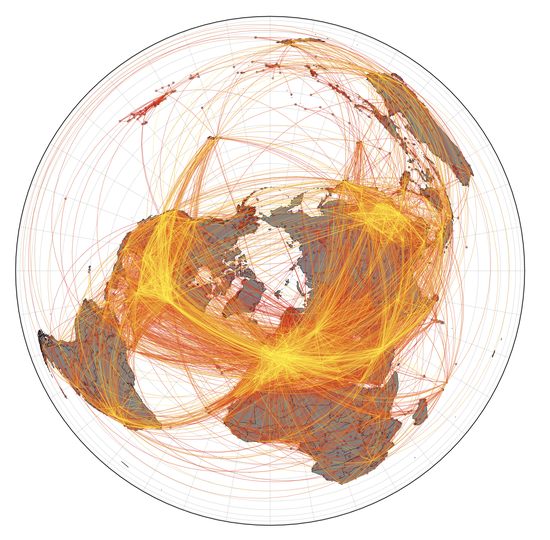
Import Risk
Our globalized world is strongly connected, on the small scale by buses, trains, cars, and on the largest, global scale by the Worldwide Air transportation Network (WAN). It is likely that our connectivity has not reached its peak yet, since for example the number of globally scheduled air passengers increased yearly by about 6% between 2004 and 2019.
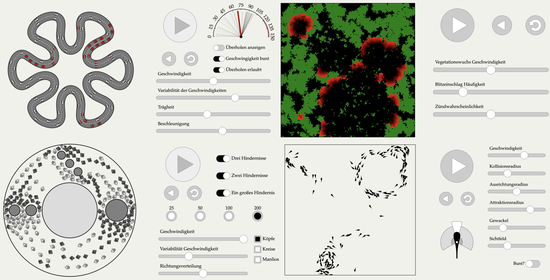
Complexity Explorables @ Cosmo
The interdisciplinary research center Department Speculative Transformation of TUD Dresden University of Technology launched the “Designing Futures Together: Visionary Realities” (https://dst-tud.de/visionary-realities-exhibition/) at the Cosmo Science Forum. The exhibition was open from April to Juli, 2024. We provided an interactive visualization exhibit with a selection of Complexity Explorables. Have a look at what people saw at the exhibition.
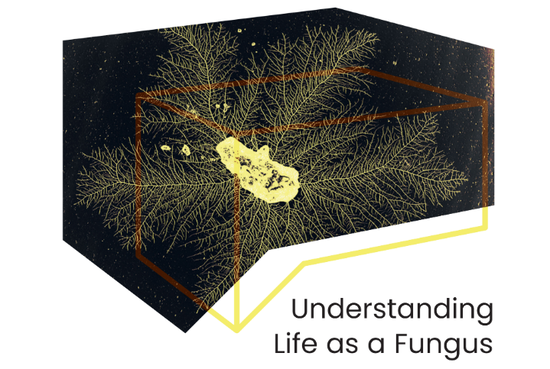
Understanding Life as a Fungus
Fungi grow by extending microscopic threads called hyphae, forming intricate networks known as mycelium. Without eyes, brains, or centralized control, they explore their environment with surprising intelligence. This exhibit transforms time-lapse imagery of fungal growth into visual datasets, revealing diverse growth patterns—from geometric structures to chaotic spirals. By studying these behaviors, we aim to uncover how fungi experience the world and how their strategies might inspire innovations in smart materials and transport systems.

Complexity Explorables
This project is designed for people interested in complex systems and complex dynamical processes. Complexity Explorables hosts different collections of interactive illustrations of models for complex systems in physics, mathematics, biology, chemistry, social sciences, neuroscience, epidemiology, network science and ecology. Topics include pattern formation, synchronization, critical phenomena, chaotic dynamics, evolutionary dynamics, fractals, collective behavior, reaction-diffusion systems and more.

CDS Vital Data Explorer
This interactive visualization explores vital health data from the Corona Data Donation project. The tool allows users to analyze aggregated health metrics including resting heart rate, step count, and sleep duration across different regions in Germany. Data is presented as 7-day averages and can be explored at various administrative levels from the entire country down to individual districts.
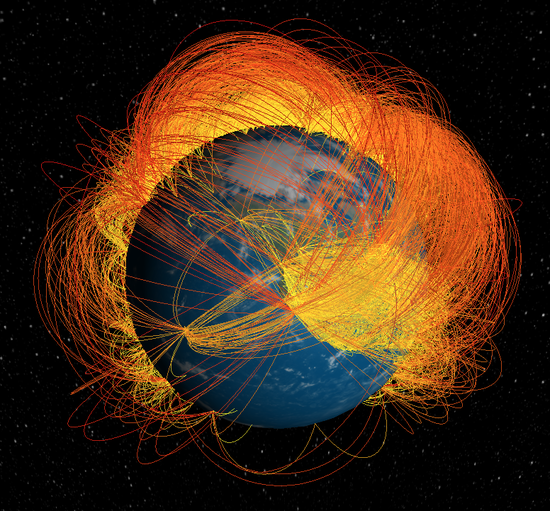
Global Mobility Visualization
This interactive visualization illustrates the worldwide air-transportation network. The network connects approx. 4000 airports globally with roughly 51.000 connections. On this network more than 3 billion passengers travel each year. In total, humanity travels a total distance of over 15 million kilometers every day (under normal conditions), that is roughly three times the radius of our solar system.

RKI Mobility Monitor
This interactive visualization tool monitors and analyzes mobility patterns across Germany using aggregated and anonymized mobility data. The tool provides insights into regional mobility changes during the COVID-19 pandemic with an interactive map and time-series charts, helping to understand movement patterns and their relationship to public health measures.
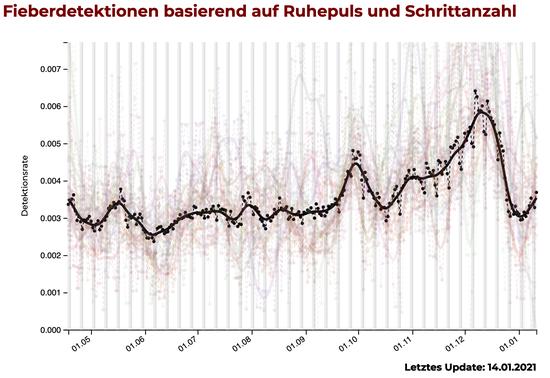
Corona Datenspende App
At the beginning of April 2020, we launched the official Corona Datenspende App. Since then, more than 530.000 German inhabitants have volunteered to donate their fitness tracker data. This is the biggest data donation project worldwide. We also calculate daily fever detections by regions and update the live fever monitor.

Epipack
Fast prototyping of epidemiological models based on reaction equations. Analyze the ODEs analytically or numerically, or run/animate stochastic simulations on networks/well-mixed systems. Simple compartmental models of infectious diseases are useful to investigate effects of certain processes on disease dissemination. Using pen and paper, quickly adding/removing compartments and transition processes is easy, yet the analytical and numerical analysis or stochastic simulations can be tedious to set up and debug—especially when the model changes (ever so slightly).
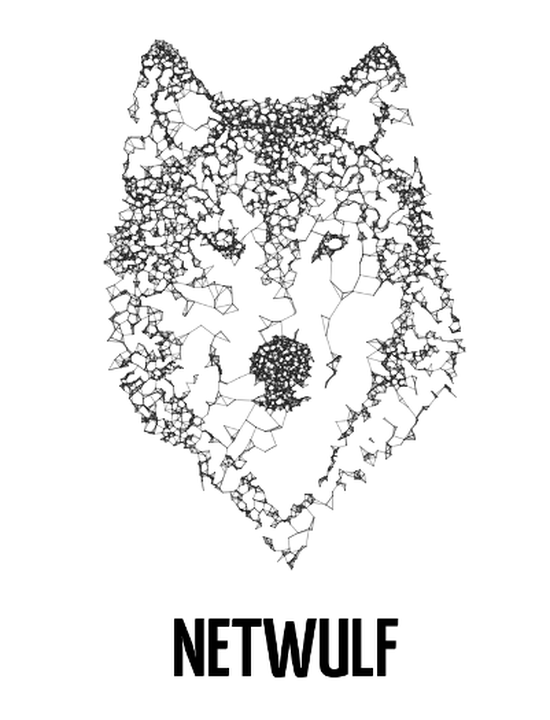
Netwulf
Simple and interactive network visualization in Python. Network visualization is an indispensable tool for exploring and communicating patterns in complex systems. Netwulf offers an ultra-simple API for reproducible interactive visualization of networks directly from a Python prompt or Jupyter notebook. As a research tool, its purpose is to allow hassle-free quick interactive layouting/styling for communication purposes.
